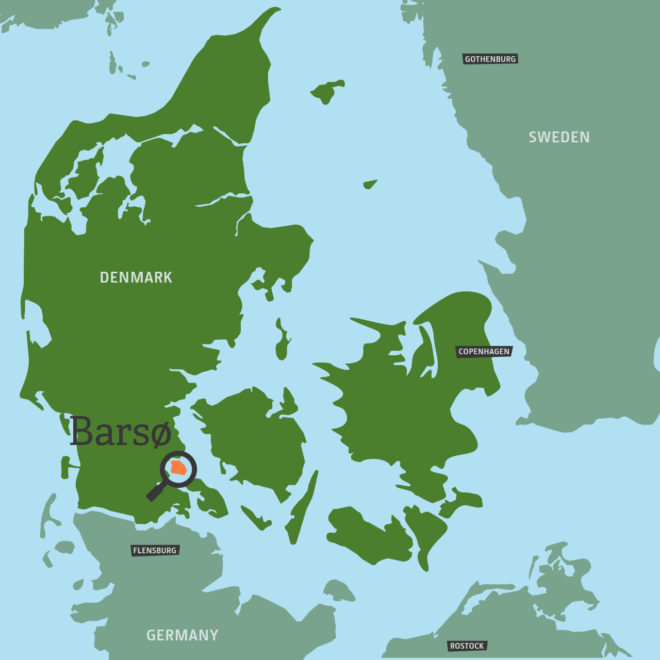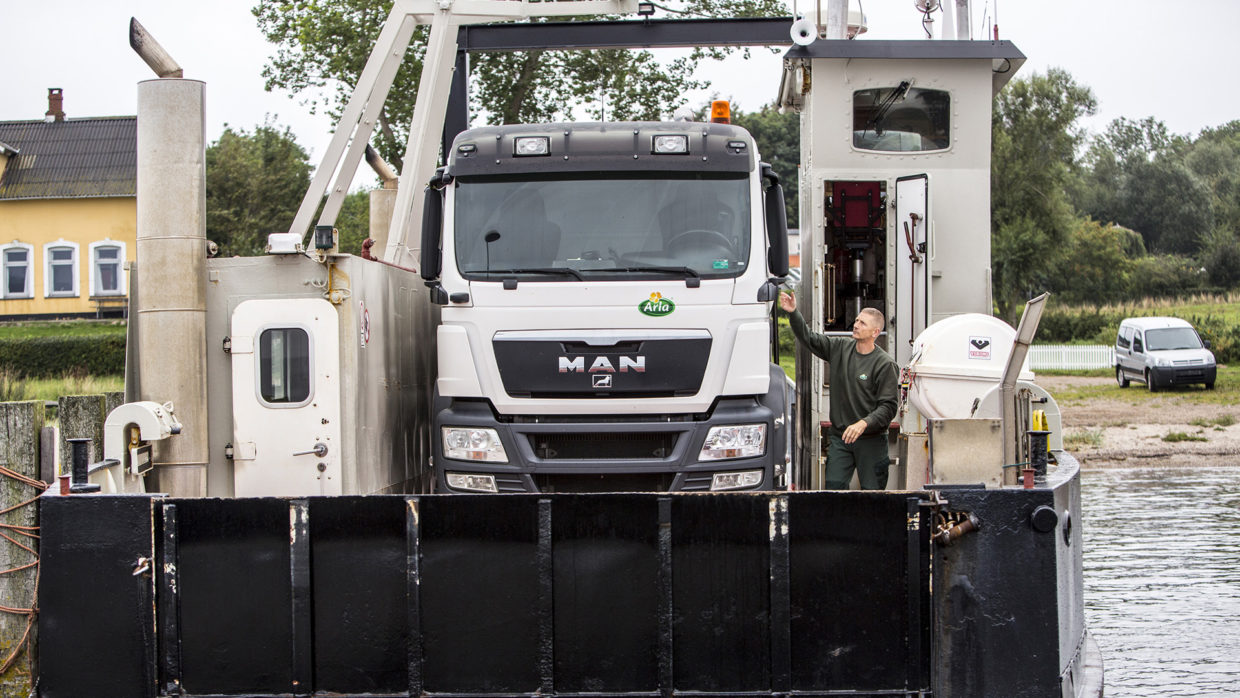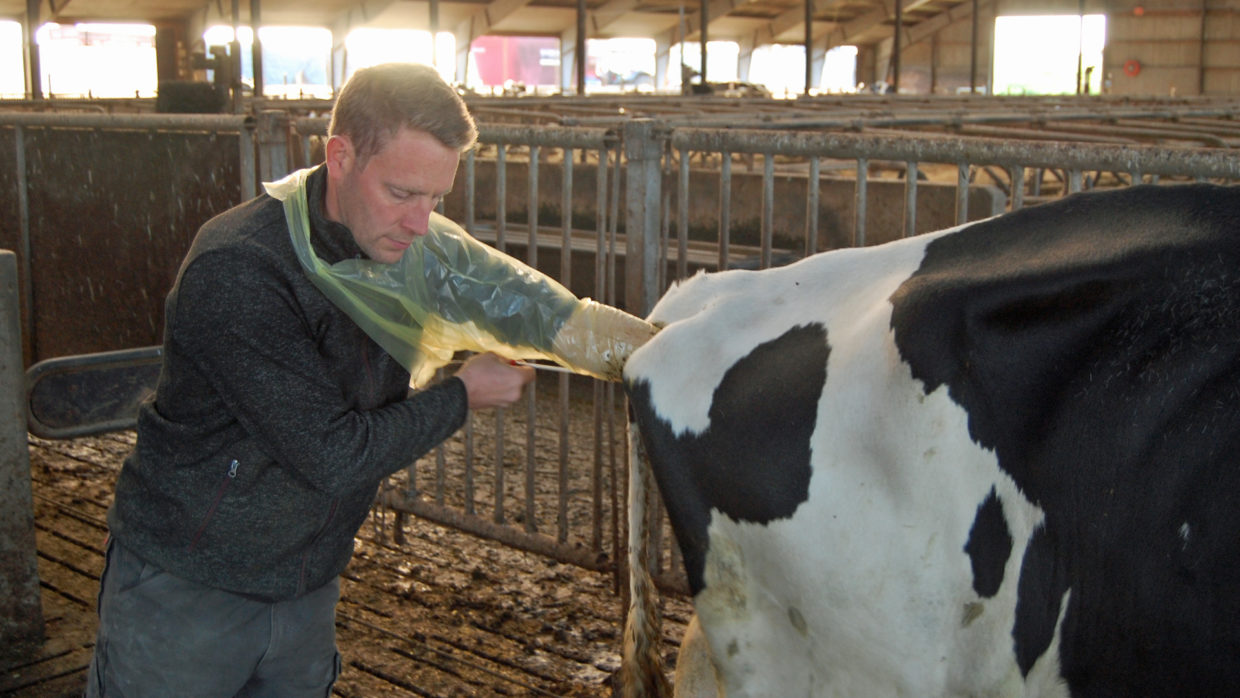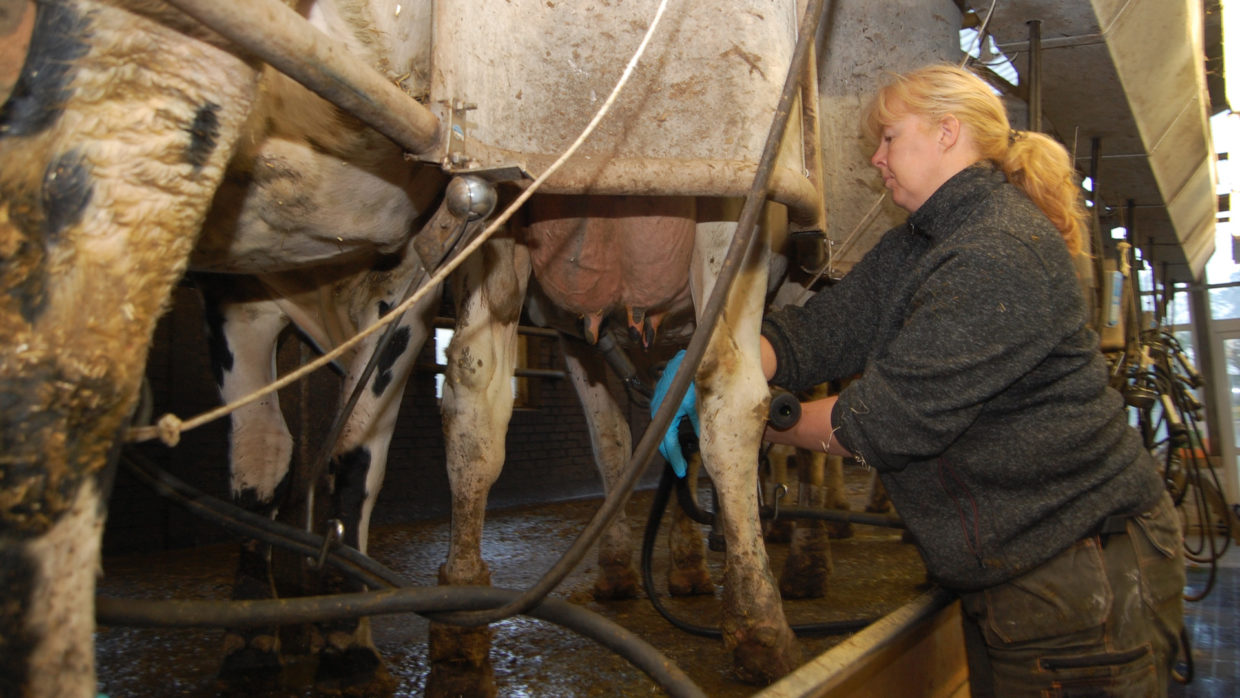It is a quiet morning like any other at Bjerggaard on the small island of Barsø, just east of Løjtland in Southern Jutland. Helle Kreiberg Svennesen has the radio tuned to P4 while she gets the 150 or so black and white dairy cows through the herring-bone milking parlour
Meanwhile, her husband Søren Svennesen drives the wheel loader around and feeds up with the mixer wagon before going to inseminate two cows that Mrs Svennesen separates from the herd during milking. An apprentice with a skid steer loader is bedding up the cubicles and calves.
It is outside of the tourist season and no visitors apart from the journalist from Furen are expected today. It is not like the busy period from mid-May to early September, when the small ferry to Barsø is often fully loaded with up to 24 passengers and three cars for the 15-minute journey.
1,500 visitors in a season
There is a big summer rush of primarily day-trip tourists on Barsø, and this is felt at Bjerggaard, the island’s only remaining farm. Over the season, at least 1,500 people take advantage of the opportunity to visit the farm and see the cows, calves and farmers.
“It’s usually school and day care centre groups or parents with children on day trips to Barsø, or perhaps spending the night in the facilities we have for school camps and the like,” explains Mrs Svennesen as she prepares a breakfast of bread with cold cuts, coffee and tea after the morning jobs.
Designated a farm attraction by the Danish Agriculture & Food Council, the Svennesens receive an amount for each school-going child who comes to visit with their class. There is no money in the other visitors. “But they should be allowed to visit and see a cow as well,” says Mrs Svennesen with a hospitable smile.
The many visiting children are a major reason why the sow, Olga, is enjoying her annual litter of piglets in an outdoor pen. It is fun for the children to see the tiny piglets, and later in the year there is pork aplenty to fill the Svennesens freezer, as well as those of their friends and family members.

All kinds of water sports
On the whole, summer is very busy on the small island. Not only because of the visitors, but also because the Svennesen family and their apprentices enjoy outdoor activities during the light and warm months. “We enjoy sailing, swimming, water skiing, and all kinds of water sports in general,” says Mr Svennesen. “If we finish work early one day, we might take the whole family and the apprentices on a trip on our motorboat to Sønderborg or Aabenraa, for example, and either take food with us or go ashore for a pizza and ice cream.”

Søren and Helle Svennesen run the only farm on Barsø in the southern part of the Little Belt.
The situation is quite different on Barsø during the winter. There is no city life to lure anyone out on to the dark roads; instead, they spend quality time at home with board games and shared TV viewing. Oh, then there’s Mr and Mrs Svennesens’ annual ski trip they take together with their adult daughters, Caroline and Frederikke, while the apprentices look after the farm for the week.
Straw as dangerous goods
Whatever the season, farming on a small island like Barsø presents unique challenges. The small size of the ferry can make things particularly difficult. “When we built a new cowshed in 2004, we had to mix all the concrete over here because the ferry wasn’t big enough to carry a concrete mixer,” says Mr Svennesen. “And the big arches for the roof had to be transported separately in eight pieces rather than in the more usual two pieces.”
Today, it is the transport of straw that causes the islanders the most hassle. When Mr and Mrs Svennesen switched Bjerggaard to organic production in 2016/17, they stopped growing grain. Now the entire – but limited – area of the island has been given over to grazing and the production of coarse fodder, which is why they buy all the straw they need from a colleague on the mainland.
But straw is flammable and therefore falls under the category of “dangerous goods”. This means that there cannot be any passengers on the ferry when straw is being transported to Barsø. That is, apart from the one person who, according to the rules, must accompany the straw when it is being transported by water in case any of the bales catch fire during the crossing.
“We need straw over here during the tourist season as well, at a time when there are often a lot of ferry passengers. That’s why we sometimes have to pay for an extra crossing without any passengers. The straw also has to be wrapped in plastic during the crossing,” says Mr Svennesen.
Collect the fodder themselves
The couple have to collect purchased fodder like cornmeal and soya either from the fodder company or the ferry berth on the mainland using their own truck. The companies won’t send a truck to Barsø, meaning that the Svennesens cannot get a bulk discount.
Conversely, the transport of milk is not particularly problematic. The milk tanker’s route is planned so that it arrives and returns with the last ferry of the day, and there is an agreement with the ferry to wait if the milk collection from Bjerggaard is delayed. Fortunately, milk can’t burn, meaning there can be other passengers on that crossing!

The route of the milk tanker is planned so that the vehicle leaves the island on the last ferry of the day.
However, not all challenges are hassle-free and inescapable. There are also some that are self-imposed and fun. One of them is an elite grazing competition in which the Svennesens participate along with 47 other organic farms. It involves getting as much grass into the cows as possible during the summer season, thus lowering fodder costs.
“We’ve always come out on top so far, so it’s pretty exciting,” says Mrs Svennesen. “We do well because the cows can come and go as they please 24 hours a day. We only bring in the ones who haven’t come back of their own accord for milking.”
Three bulls sold to Viking
Another exciting challenge is the breeding work, for which Mrs Svennesen is responsible. She does this so well that Bjerggaard has delivered three bulls to the cattle breeding association Viking. “We’re very focused on health in breeding, and we’re not afraid of trying something different,” she says.
“Our first bull to Viking was VH Barso. For him we used semen from the American bull Blindside, which no one else had used in Denmark or elsewhere, and inseminated one of our best heifers. We still have her and she is now on her seventh lactation. We average about 4.5 lactations per cow.” Mrs Svennesen’s interest in breeding has led to her becoming a member of Viking Denmark’s board of representatives. Mr Svennesen is also active as a member of the board for LandboSyd.

Maize is grown on approximately 30 hectares on Barsø.
Of course, this means they have to attend some meetings on the mainland. But as Mr Svennesen explains, this is not a problem: “We have our own boat, which can cross to the other side in just four minutes, and we have a car parked over there. So it’s just as easy for us to get around as it is for everyone else. And if you’re like me and you were born and raised on the island, it’s completely normal to take your boat out when you need it.”
Mrs Svennesen is from Haderslev and lived on the mainland until she met Søren at Gråsten Agricultural School and decided to become an islander with him.
Barsø
- Island covering an area of 2.7km2 in the Little Belt, east of Genner Fjord and Løjtland in Southern Jutland, Denmark.
- 14 inhabitants live in half of the island’s 20 houses all year round. The other houses are holiday homes.
- Ferry from Barsø Landing, 12km northeast of Aabenraa. Five to eight crossings daily.
- Hilly landscape with both sandy and clay soil; the highest point is 39m above sea level.

Bjerggaard dairy farm
- Only farm on Barsø.
- Owned and run by Søren Svennesen and Helle Kreiberg Svennesen since 2001.
- Size: 250 hectares.
- Crops: 30 ha corn, 60 ha green rye (wholecrop) and 110 ha grass for mowing and grazing, 50 ha perennial grasses (primarily coastal meadows).
- Schaubetriebe-Programms des Dänischen Landwirtschafts- und Nahrungsmittelrats.








